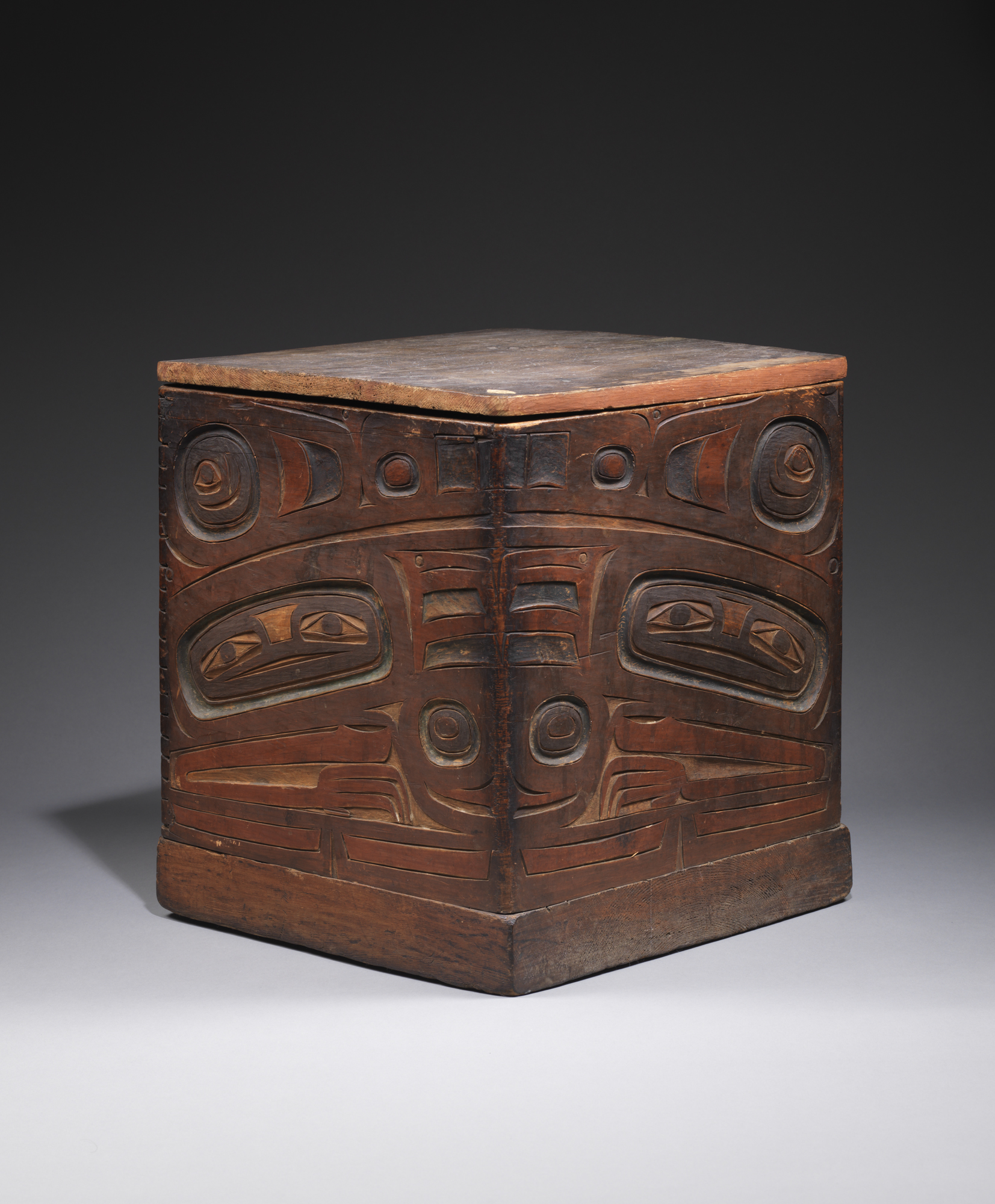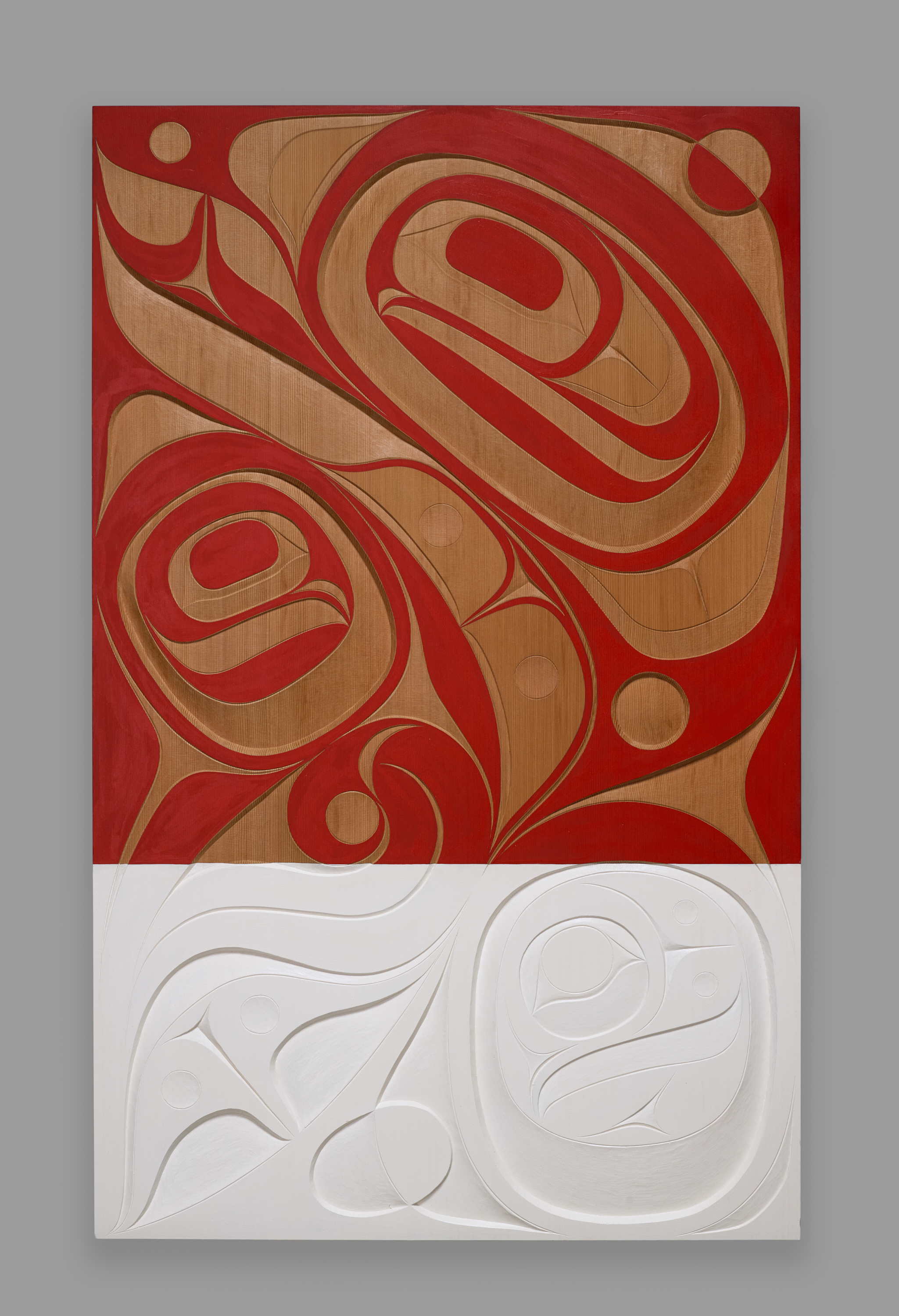Recent Acquisition | Our Home
The Museum has acquired Our Home, a relief carving by First Nations artist Rande Cook. Cook combines the tradition of graphic aesthetics of his home community, the Kwakwaka’wakw, inhabitants of the coastal areas of northeastern Vancouver Island and mainland British Columbia, with his interest in the visual language of Modernism. In Our Home, Cook works within the tradition commonly called "formline," a term coined in 1965 by art history professor and curator Bill Holmes. Formlines are the characteristic ovoids, U shapes, and S forms that delineate figures, create design elements, and serve as the stylistic basis for abstract compositions in woodwork made by members of Northwest Coast tribal communities. These lines are traditionally painted red, black, blue, or green with natural dyes made from plants native to the area.
Cook’s relief carving evokes an interior screen that might both decorate and divide a longhouse—the traditional cedar plank dwelling that houses multiple generations of a family. By painting over the bottom half of the carving in white, Cook references the erasure of the culture of the Northwest Coast indigenous peoples and the traditional community metaphorically represented by the longhouse.
Our Home allows for a rich dialogue between the work of contemporary Native artists and historical objects in the Princeton collections that demonstrate the use of formline, such as a carved bentwood chest and lid painted with totemic carving by a 19th-century indigenous woodworker. Cook’s practice also frequently combines traditional techniques with modern materials. His use of acrylic paint (as opposed to a traditional red ochre) situates his piece as a bridge between the artistic traditions of native artists and the formalism of mid-century abstract painting.

